Last Updated on July 28, 2023 by
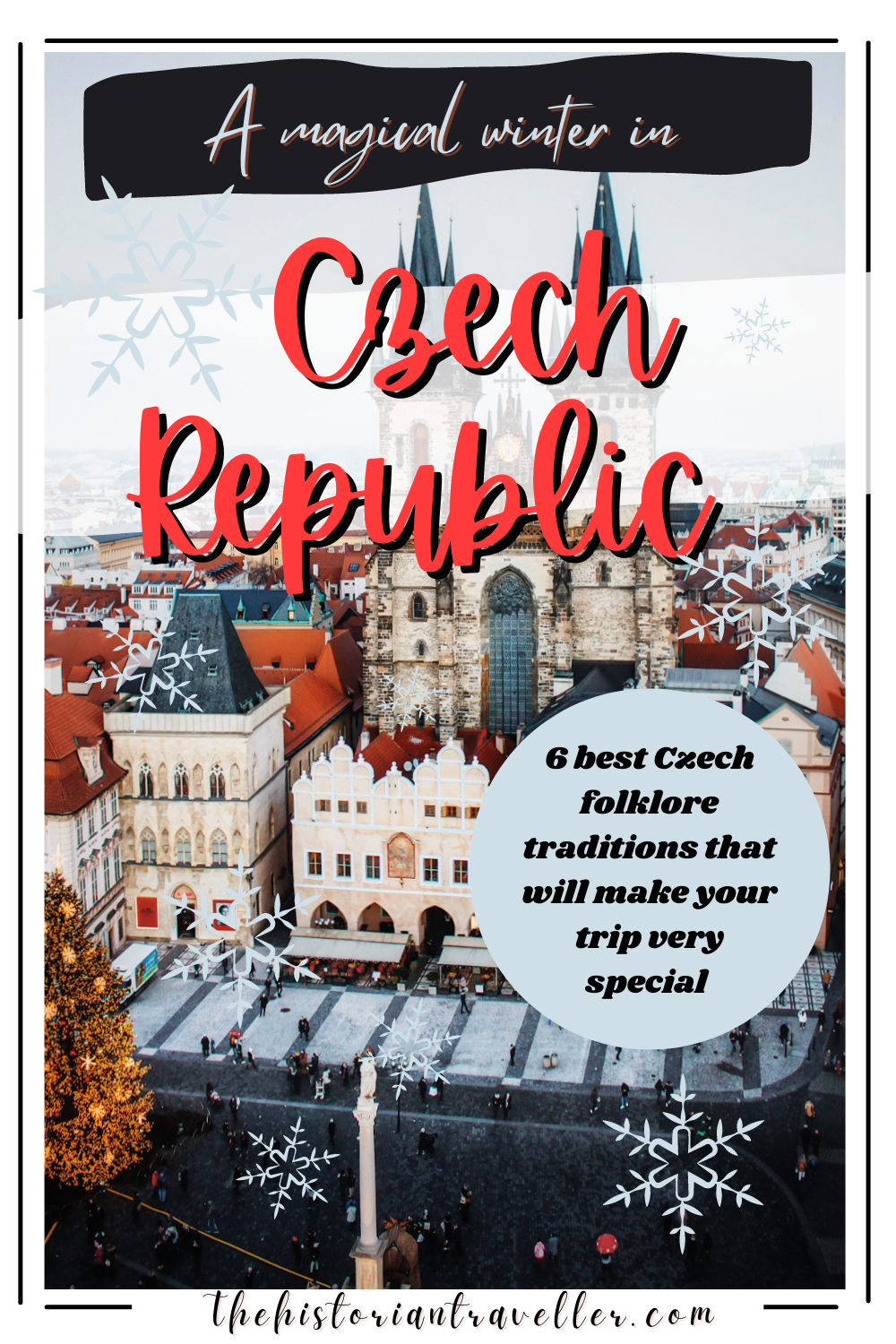
Czech Republic in winter is magical: entire towns covered in snow, smell of svařák (mulled wine) coming from small pastry shops, romantic cobblestones alleys to explore, cosy cafes where to have a taste a traditional perník (gingerbread biscuit) and folklore traditions that come alive at every day of the Advent calendar. A week spent in Czech Republic taught me that Czech people are very serious about their winter folklore traditions. This is fantastic! There’s nothing more interesting than visiting a country and see how local people are happy to keep alive their historical and folklore traditions. This is done not only by celebrating them at home, but by sharing them with the world on a wider touristic experience. In this blog, you will read about 6 of the main Czech Republic winter folklore traditions I discovered during my last trip.
These traditions are generally celebrated on specific days or winter period, so you can plan your trip accordingly.
Table of Contents
Czech Folklore. When history meet the legend
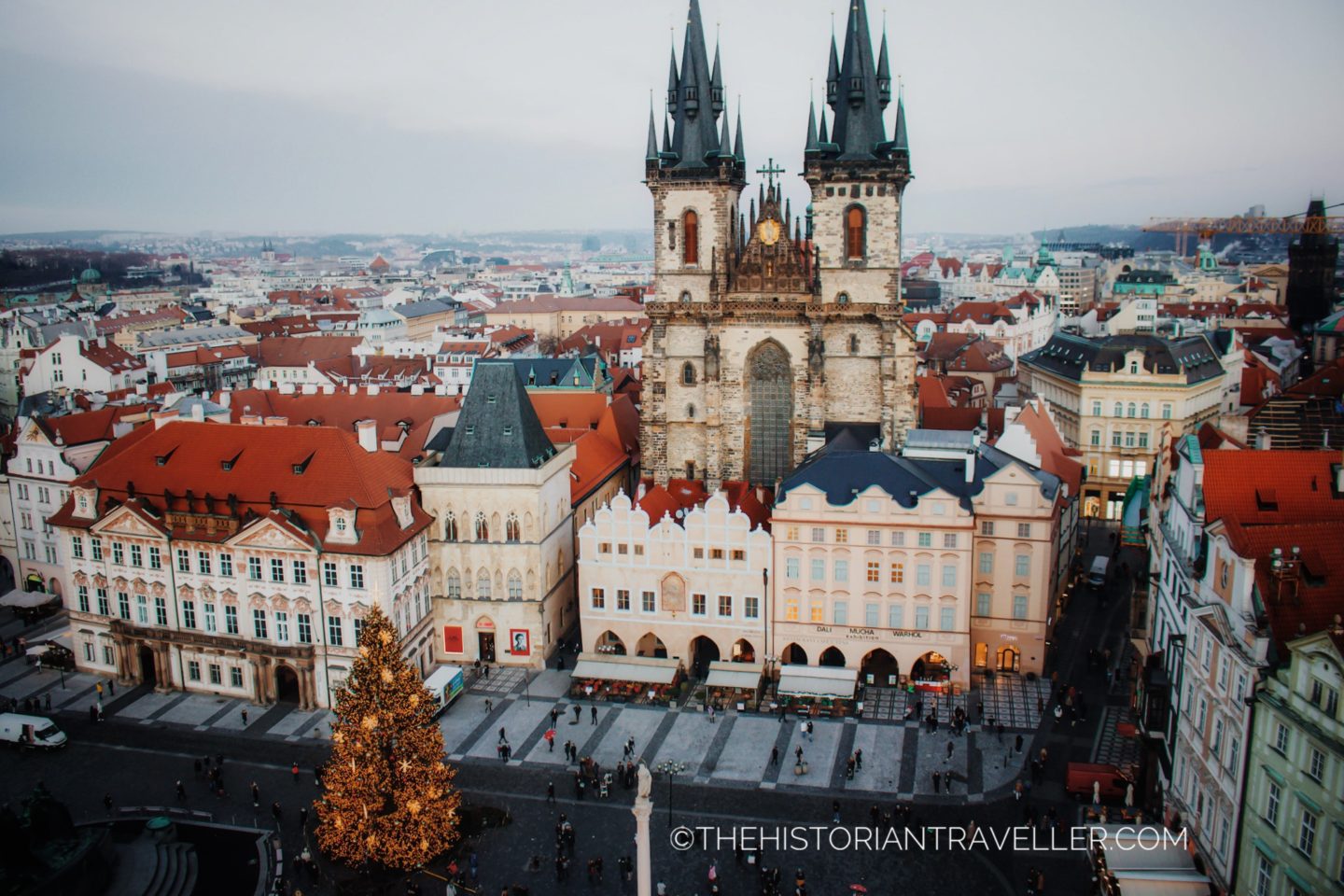
Folklore is deeply rooted in Czech Republic. It is an essential part of Czech culture that visitors should learn about prior their visit. Czech folklore developed over a number of centuries. However, it was only on the verge of the XIX century that the Czech national movement used the folklore tradition as a concept describing Czech national identity. In this regard, Czech folklore origins didn’t come from straight way but are the result of a primeval heritage inherited from idealised pagan Slavic ancestors with a mix of Christian customs and German influence. Early in 1820, Czech intellectual elite, mostly poets and writers, start collecting folk songs and folktales that were previously of exclusive interest of antiquarians.
This renewed interest served as an inspiration for Czech literature and the development of important folktale collections (e.g. the Božena Němcová work). Moreover, the, very debated, appearance of the manuscripts of Dvůr Králové and Zelená Hora in the early 19th century had a great impact in the development of a broader culture in the Czech National Revival. In fact, this inspired much of Czech art and culture until the end of 1800. In this regard, during the late 19th century, folk culture started encompassing not only folktales but also a new type of material culture including Czech craft, costumes, ceramics etc. Furthermore, the creation of academic lectures about folklore held at Charles University in Prague, increased the public interest in folklore heritage.
With the WWII, and the arrival of Communism the folklore tradition and its creativity was no longer the same. Nevertheless, this didn’t stop Czech people for cultivating and keeping alive their own heritage traditions during those hard years. However, only in the early 2000 the Czech Republic government implemented practices for the safeguarding and acceptance of Czech folklore heritage.
Czech folklore nowadays
How is translated Czech folklore into nowadays society’s traditions? In contemporary society folklore heritage is transmitted in a different series of ways. There are music and dance festivals, Czech seasonal celebrations, traditional costumes, art and crafts, folklore festival and transmission of traditions from elders members of the families to the younger ones. Each season, each region of the country and possibly even each family, has different traditions incorporating this shared national folklore. These are an essential part of the everyday life and beliefs of Czech people. Folklore and traditions still play an vital role Czech culture and institutions have a great responsibility in the dissemination and preservation of these national traditions.
Czech Republic winter traditions
It was only my second day in Prague when a nice lady holding a wicker basket approached me and my babies to offer them some sweets and apples. I immediately frozen as one of the first things Italians teach to their kids is the rule “non accettare cibo dagli sconosciuti” aka “don’t accept food from strangers”. I grew up following this rule that apparently was hugely popular in the Italian ’90s. Especially, after a series of kids were kidnapped following someone offering them sweets/food. So, when this kind lady approached us, I saw little Alex tending his hand towards an appealing apple. There I immediately heard my mum voice yelling “don’t take food from strangers!!!”. Luckily, my lovely guide Nikola was right next to me. After seeing my worried face, she told me “don’t worry, it’s a tradition for St. Nicholas day”!
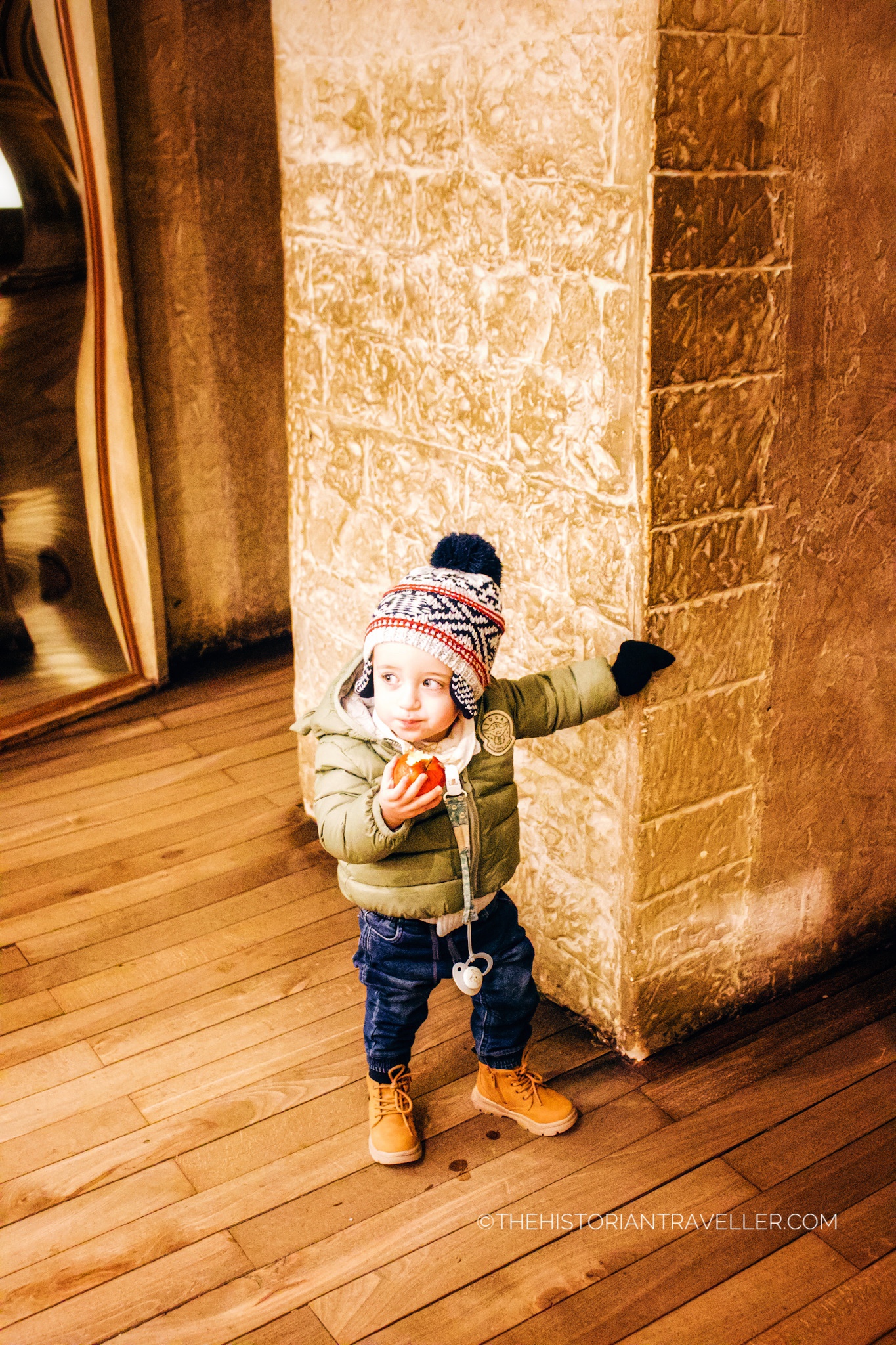
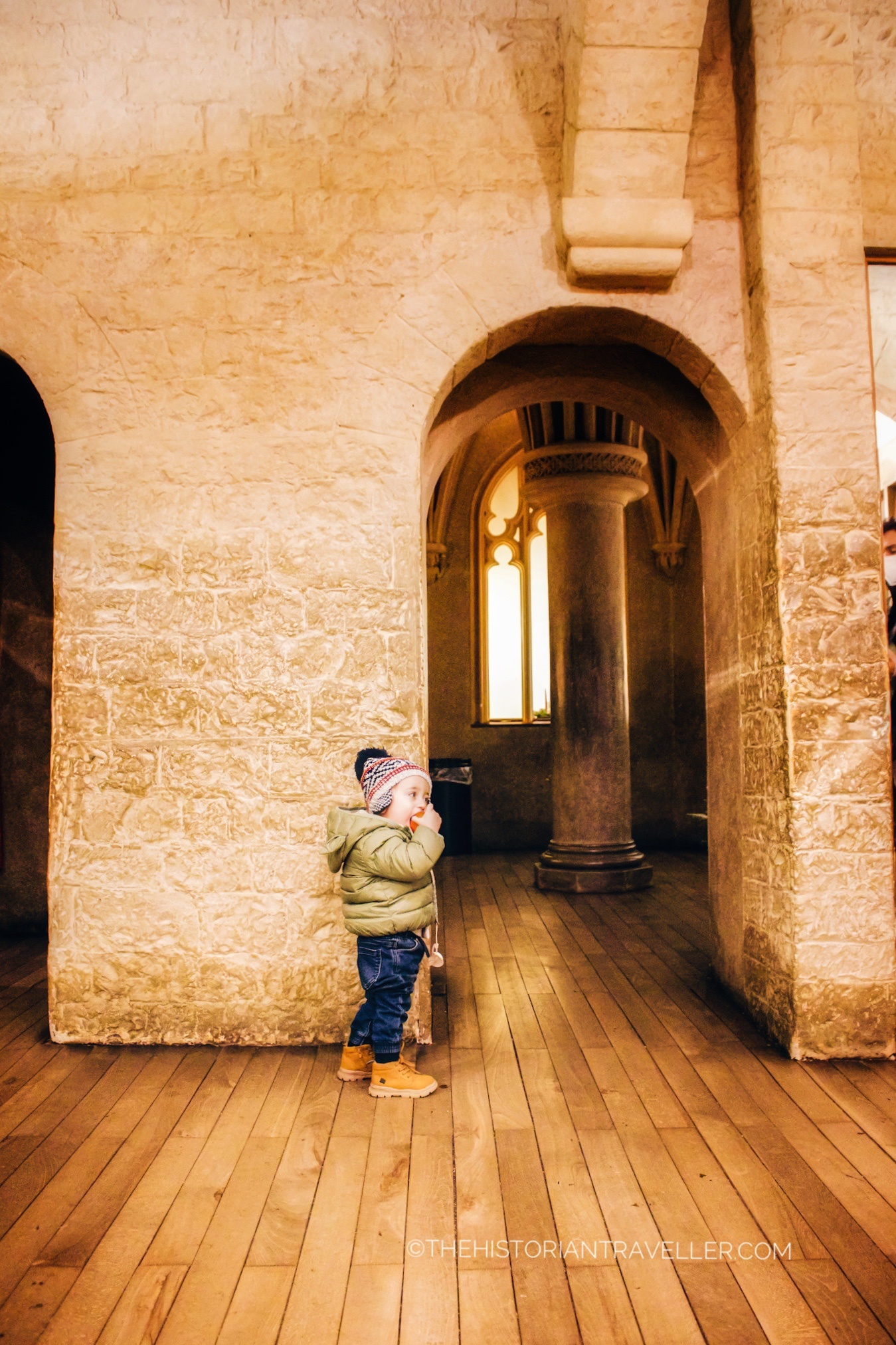
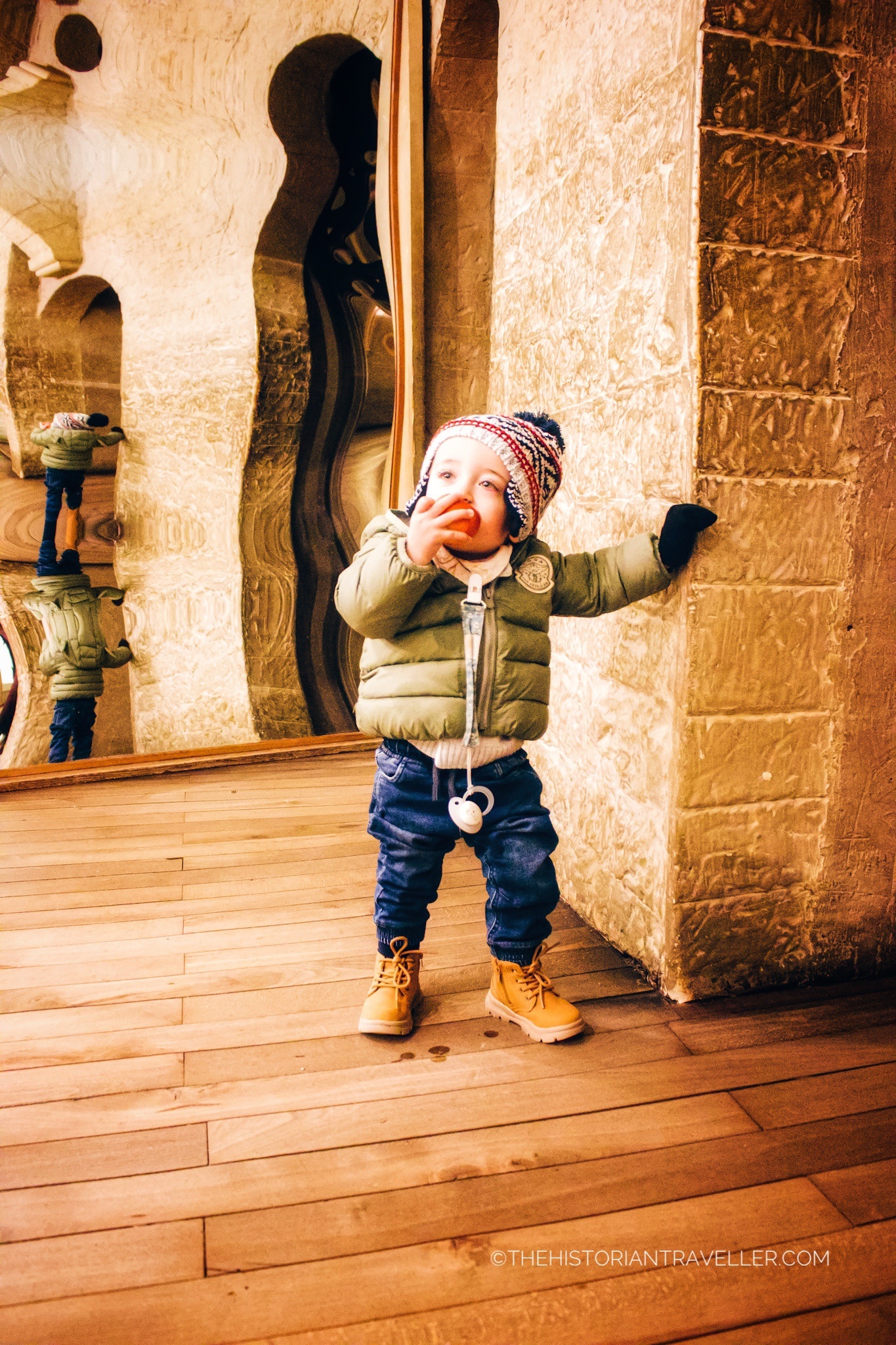
I knew about Czech love for traditions but I didn’t expect to experience them in first person. Our cultural differences made me feel guilty and a little bit ashamed for my cold reaction. After seeing Alex’s happiness for receiving his apple, I wanted to learn more about this aspect of the Czech culture. I wanted to embrace festive traditions for the rest of the week! On the same afternoon, another stranger gifted the babies some lollipops. This time, I knew why he was doing it! Here comes why I’m writing this little guide about winter traditions in Czech Republic.
If you are travelling during the Advent season in Czech Republic, it’s likely that you will face many traditions you are unfamiliar with. So, you may want to experience them or have a basic knowledge of what you may expect during your visit. Therefore, you will find below some of the winter traditions I learnt about during my stay.
1. St. Nicholas day (Mikuláš)

1937 Czech Postcard
St Nicholas Center Collection
St. Nicholas day is one of the most famous winter celebrations in Czech Republic. Moreover. It’s also one of the oldest Advent traditions still celebrated nowadays. It is traditionally celebrated on the night of the 5th December. During the days anticipating Mikuláš, Czech kids start being nervous. Indeed, from a certain point of view, St. Nicholas day can be rather terrifying for them.
According to the tradition, on the night of 5th December there are three figures going around the Czech streets. St. Nicholas ( Mikuláš ) who rewards good children, the Devils (čerty) who take away bad children and the Angels (andělé) who protect them. St. Nicholas knocks on every door to quiz children about their behaviour during the year. Children who behaved well, usually receive sweet treats, apples, nuts or small gifts after singing or saying a poem to the saint. The unfortunate children who are naughty, will be thrust into the devil’s sack and carried to hell.
In reality, Angels intercede for them so they usually receive coal or hard potatoes.
St. Nicholas day in Prague
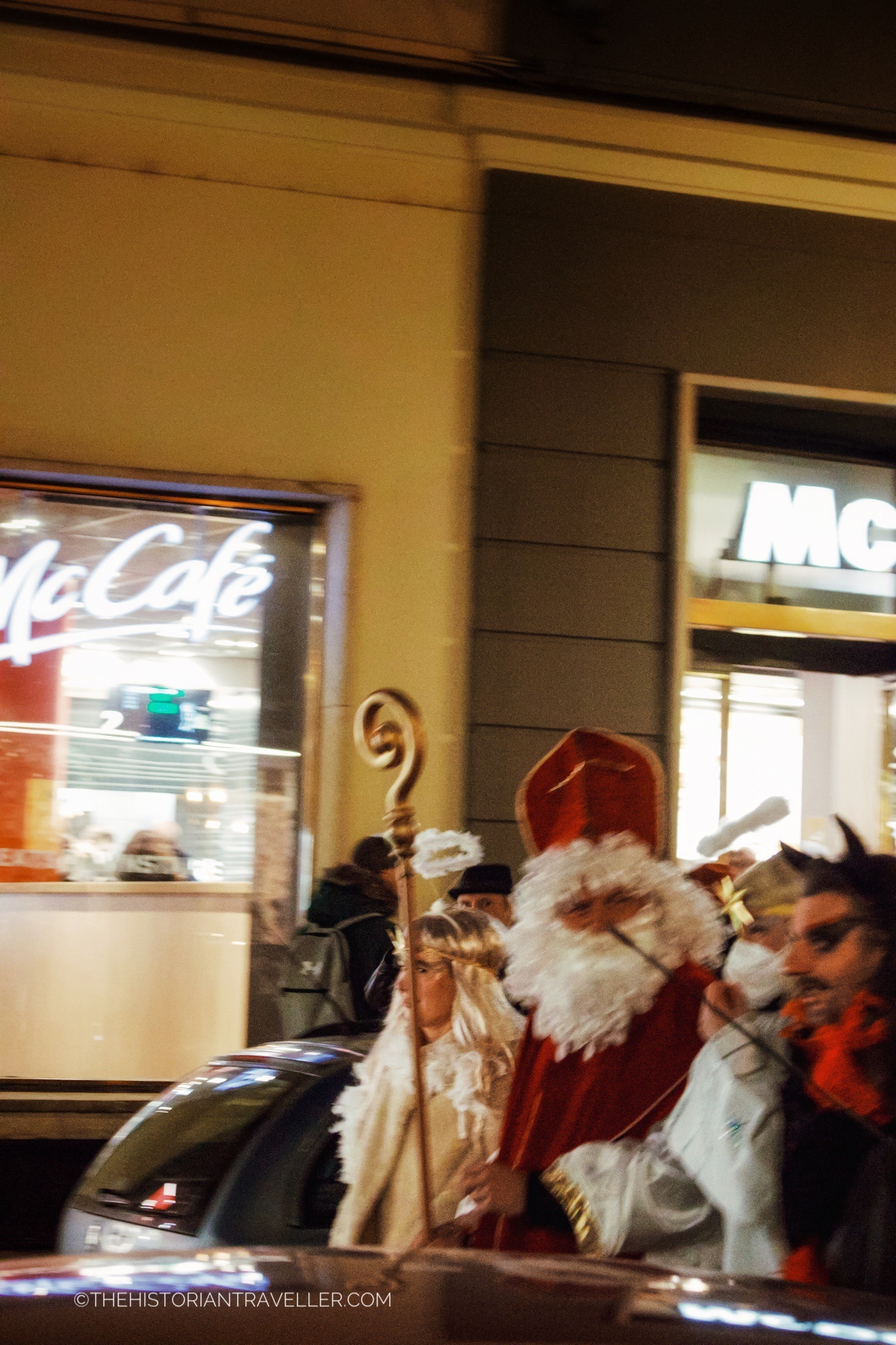
If you happen to be in Prague between the 4th and 5th December you will witness something very unique. In fact, the ancient cobbled streets of Old Town will be crowded with devils and angels. You will see many children with their parents wearing luminous headbands (some of them will wear horns, some auras). I honestly didn’t realise what was happening (babies’ fault) until I saw the first angels going around near the Old Town Hall. I suddenly realised it was St. Nicholas day and I was experiencing something very unique. In fact, in Italy and the UK we don’t have those type of celebrations! You will feel the festive feeling all around. Moreover, streets will be more crowded than usual but it’s something one should experience at least once!
The Angels parade
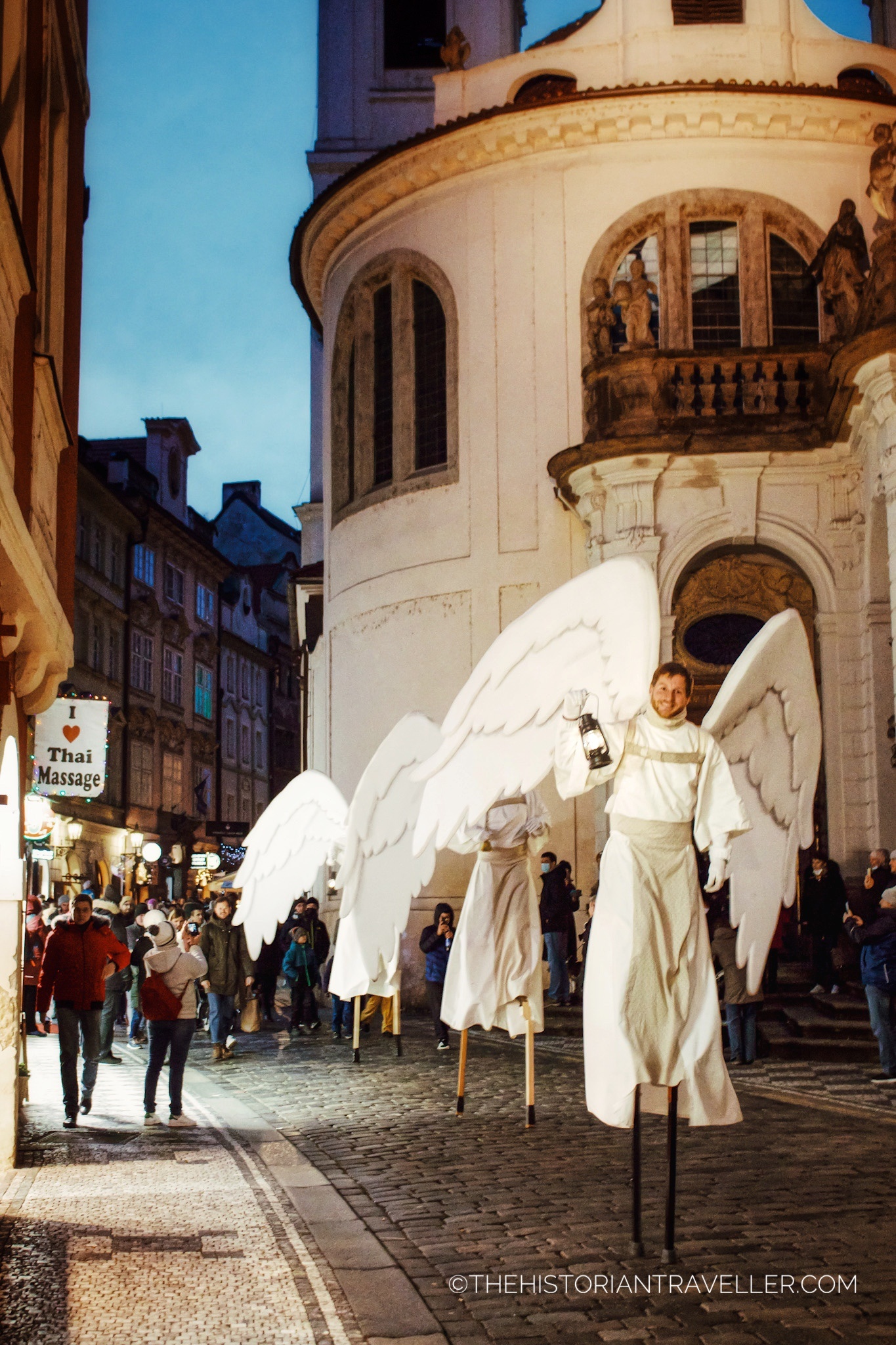
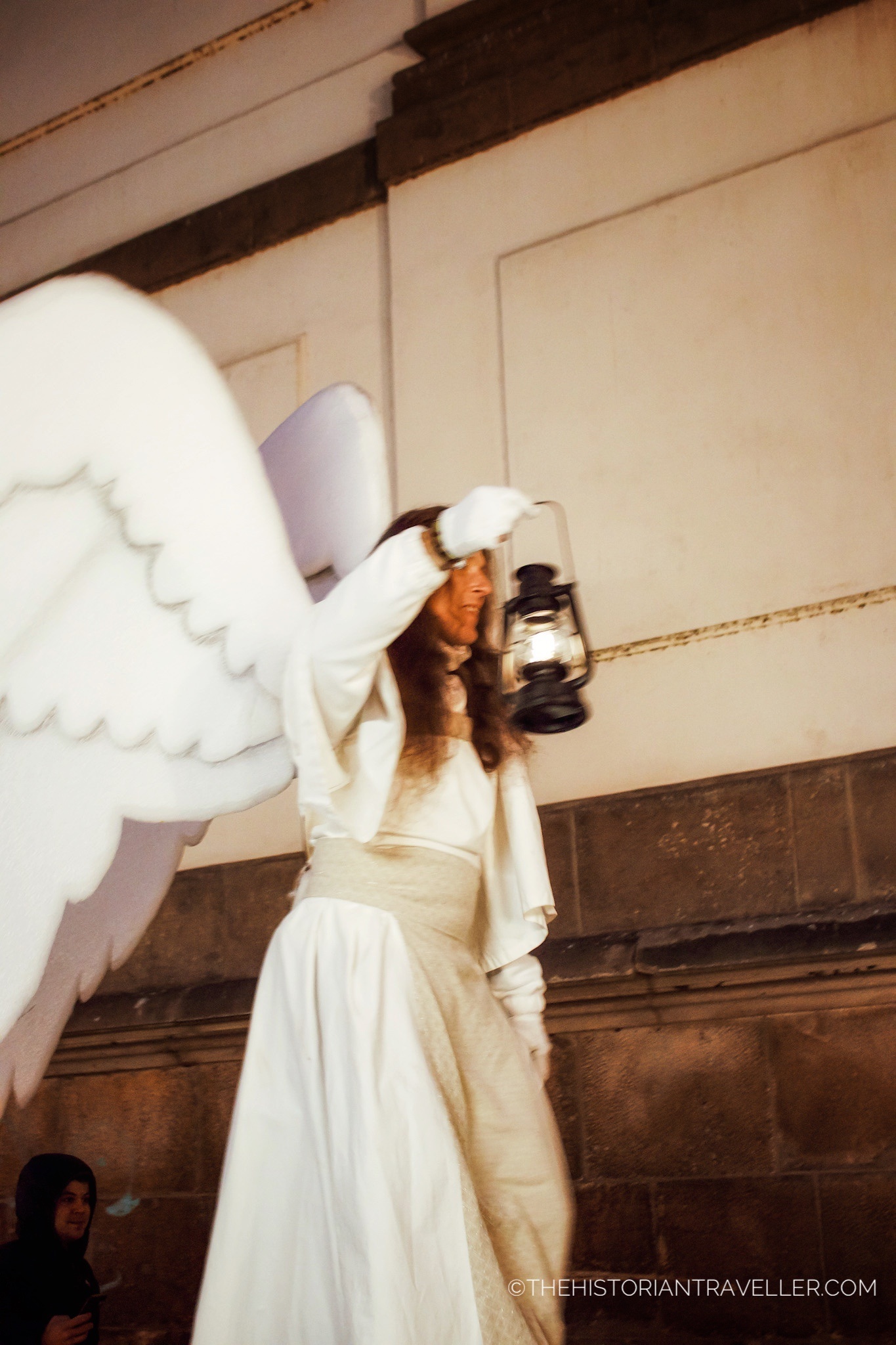
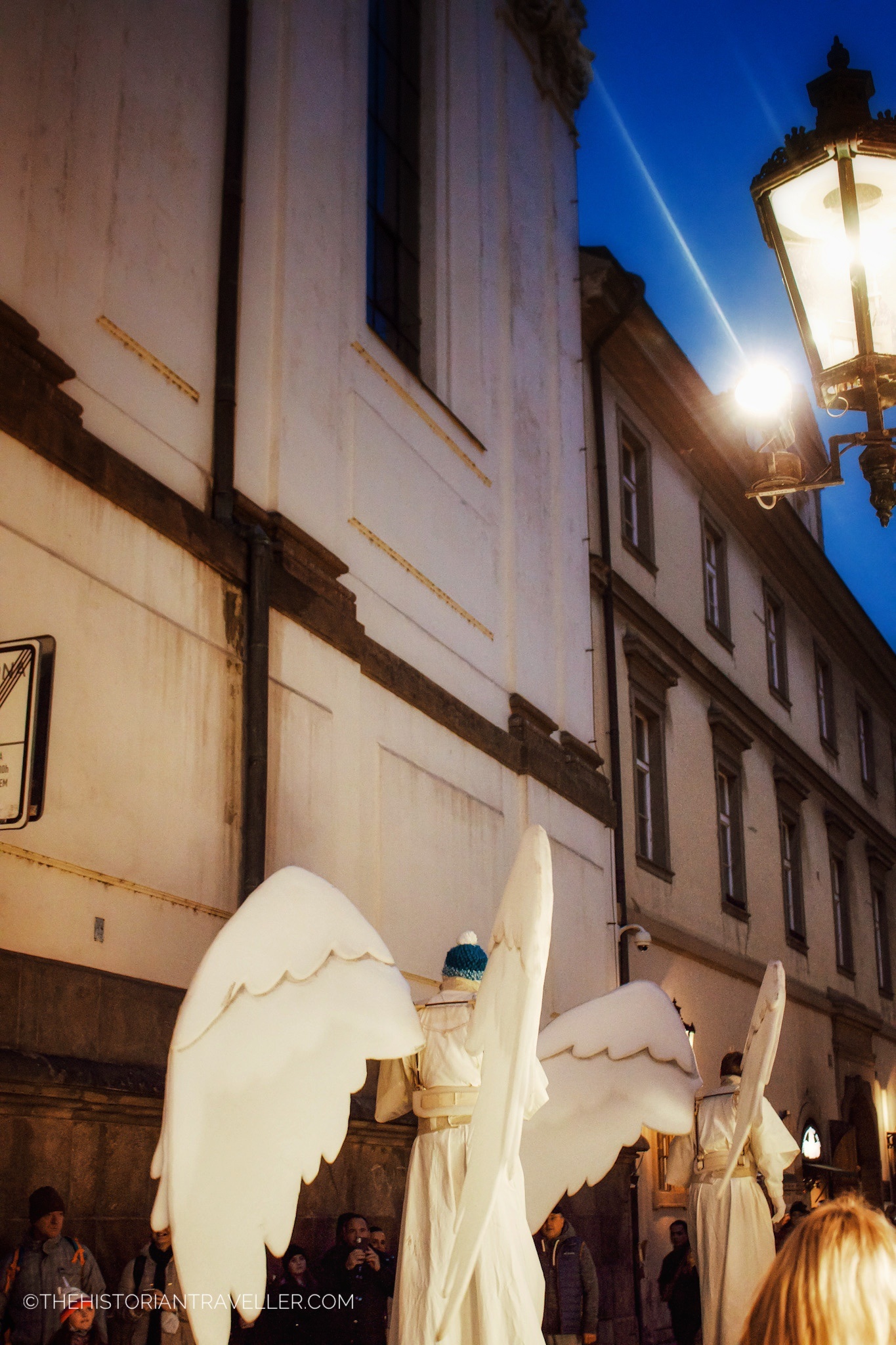
Something I recommend you not to miss is the Angels parade around the streets of Prague. Every Sunday for the whole Advent time, the teatre festival Za dveřmi organises a parade of giant angels greeting children and the general public. This parade is generally hold at Old Town Square. However, this year, because of the pandemic, the Angel parade itinerary is kept secret and you have to search for them in the streets of Old Town.
We found them by chance while enjoying a warm Trdelnik on the street. I was so happy to see them!
2. The Lamp lighter of Prague
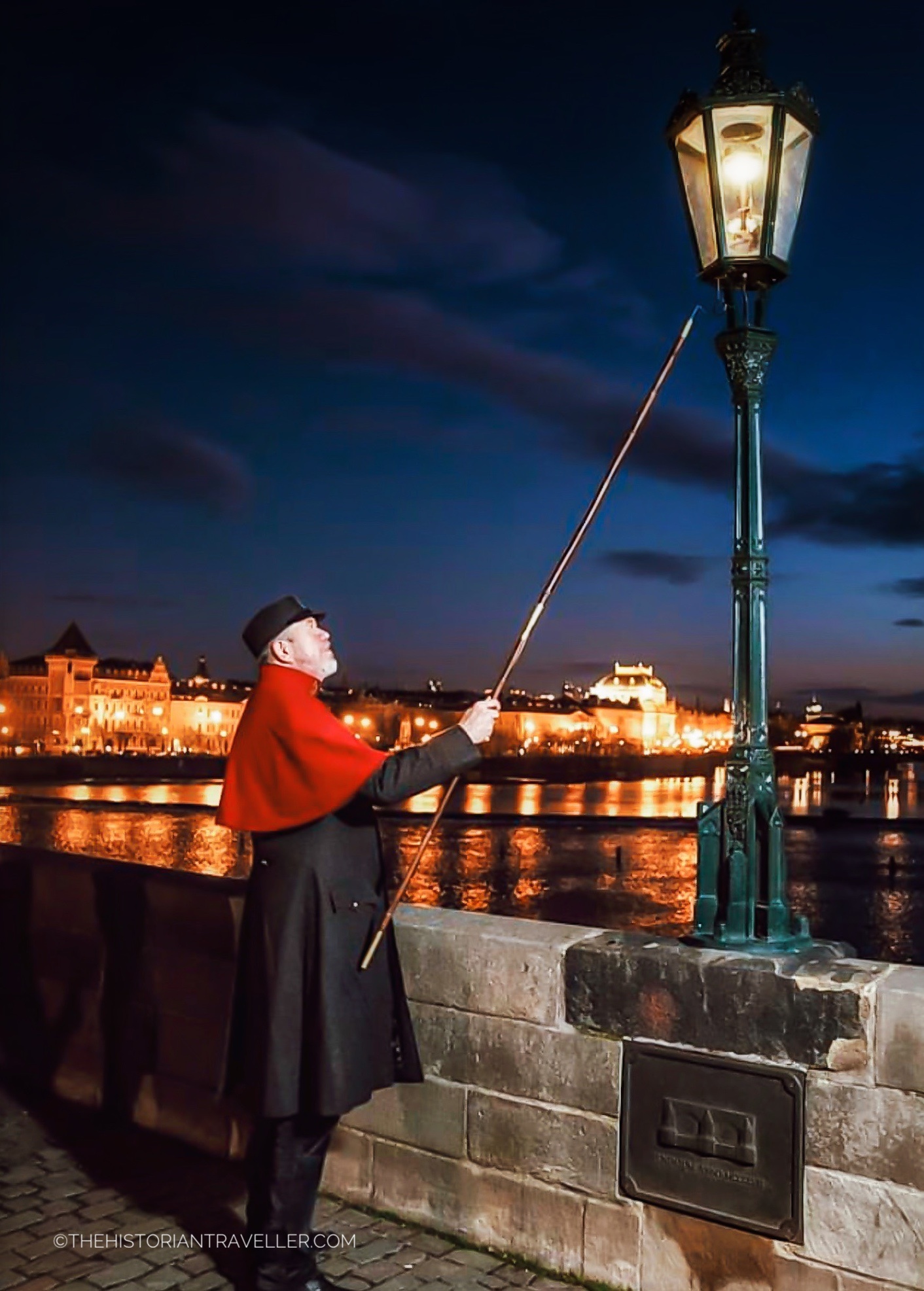
We were walking on Charles Bridge when we suddenly seen a little crowd near one of the bridge lights. Alessio told me “look at that man, is lighting the lamps!”. It was so crowded near him, I couldn’t take a proper picture but I suddenly felt like I travelled back in time.
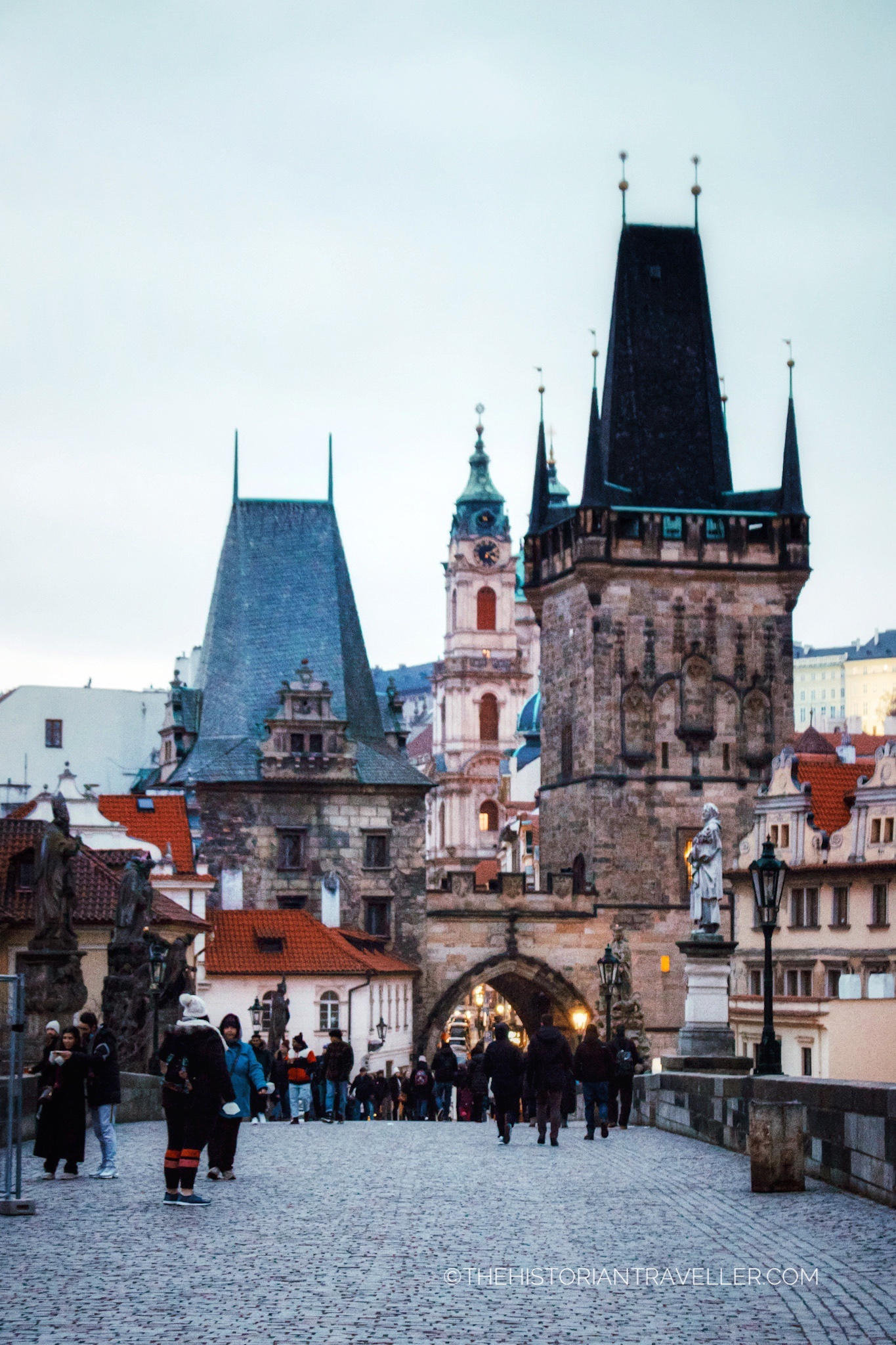
Did you know that Prague is one of the last three cities in the world to use a lamplighter? Gas lamps have a long history in Prague as they have been installed all around the city since 1847. Around 1940, there used to be more than 9000 gas lamps in Prague. They lasted until the introduction of the electricity changed the way European cities enlightened their streets. In fact, during the mid 20th century gas lamps started being replaced by electric ones.
Nevertheless, in 2002 a project by the Prague Town Hall brought back the gas lighting in the ancient streets of Old Town. This project, included also the illumination of Charles Bridge that in 2010 switched back to gas lamps and by now is the only bridge in the world to have this type of lamps. In an attempt to revive the old romantic days, a lamplighter dressed in a 19th century uniform was brought back too.
Where and when to find the lamplighter in Prague
The only period you can see him walking around the Old Town is during the Advent time. Every day at 4.00 pm from Křižovnické náměstí in Old Town, the lamplighter Jan Žákovec will turn on each lamp gas on the route to Charles Bridge. Depending on the crowd, he may stops to take pictures with you and tell you about the history of gas lighting in Prague.
We spotted him around 16.45 at Charles Bridge. However, because of the crowd around him without any safe distancing we didn’t feel to get too close with two little babies without protection.
3. The floating walnut shells
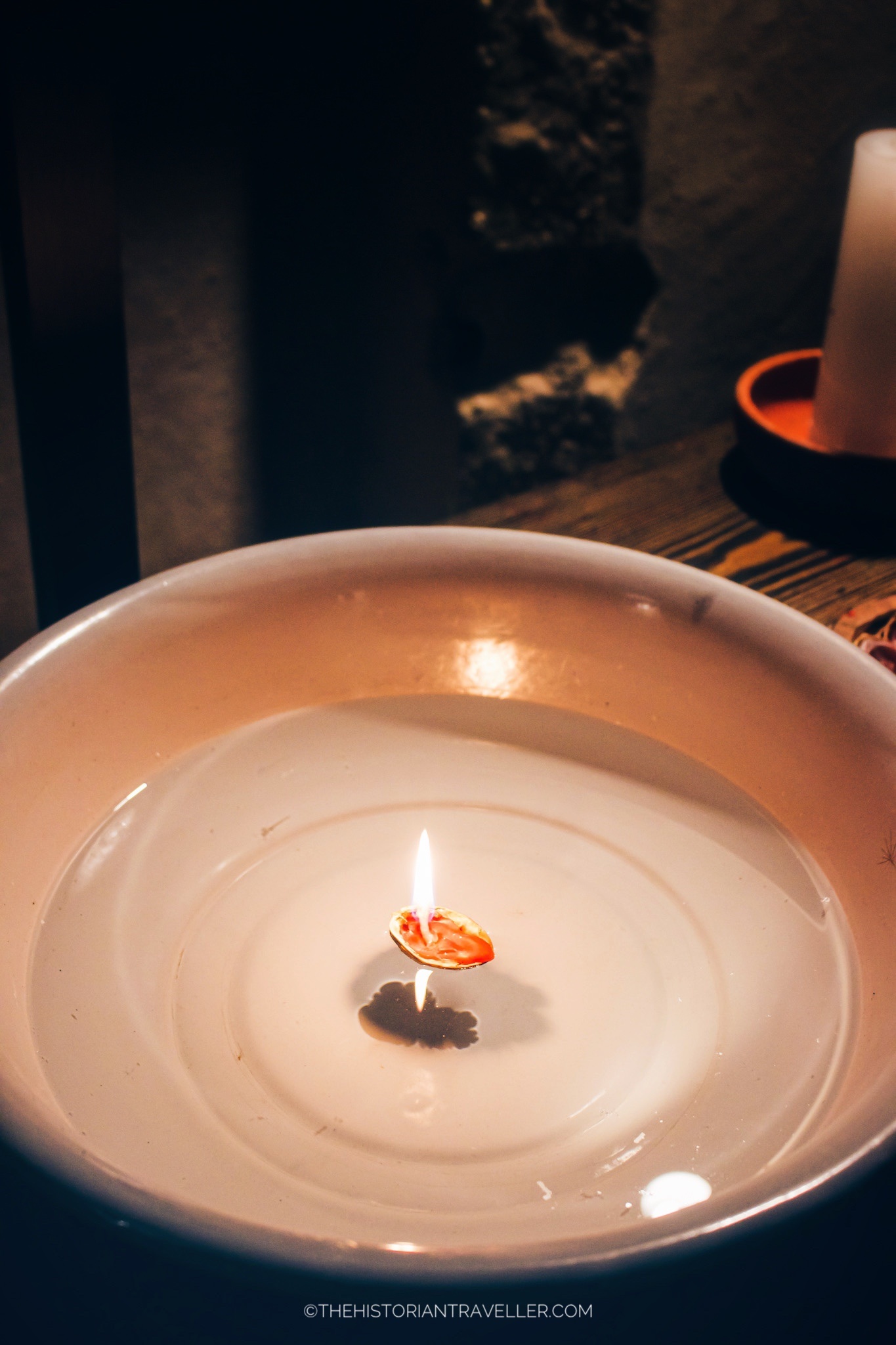
One of the things I learnt during my trip is that most Czech people are superstitious. Moreover, even if they are not superstitious, they care a lot about their traditions so they keep protecting them and passing onto future generations. One of the Czech most folklorist customs that I was able to experience my self is the floating walnut shell.
The floating walnut shell is usually done during the Christmas Eve or during the Advent period and it is based around foretelling the future. This practice will tell you specifically if death will come on the new year.
Families prepare little boats out of walnut shells and place on them a small burning candle. Then put the floating shell with the candle light on a water bowl. If the shell float towards the other side of the water bowl without problems, you will have a healthy year. Otherwise, problems or bad luck may happen.
I had the opportunity to make a floating shell my self while in Český Krumlov (pictured above), luckily it didn’t turned down!
4. A Gingerbread for good luck
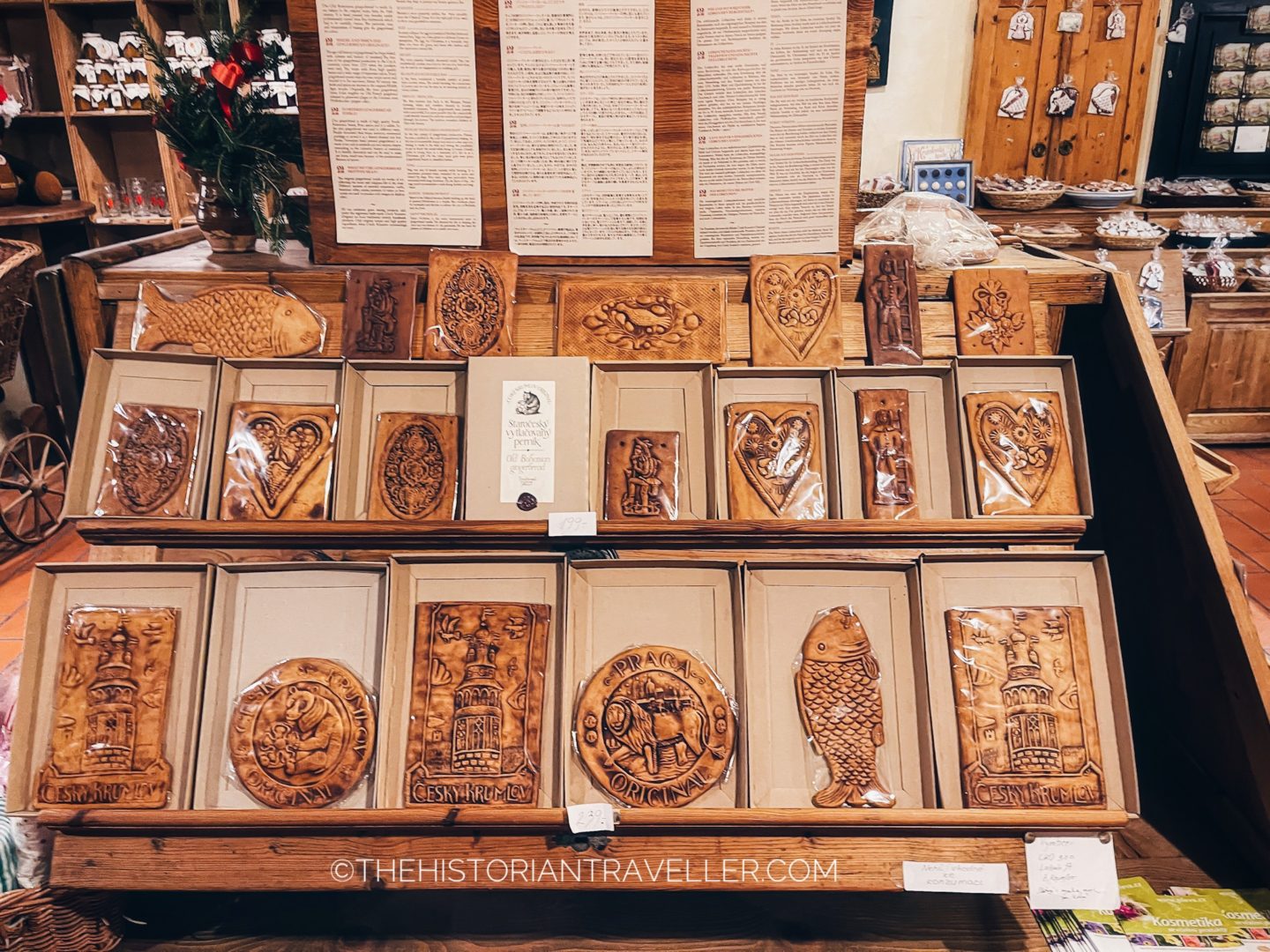
Anyone has familiarity with gingerbread biscuits around the Christmas period. However, for Czech people, the “perník” (aka gingerbread) is a matter of historical national pride and unmissable winter tradition. In this regard, you probably don’t know that Czech people have one of the oldest gingerbread culinary tradition in the world. Their gingerbread recipes are so old to date back to the 14th century. You have just to think about that British people discovered gingerbread only in the later 17th century. Almost four centuries later! Therefore, when you taste Czech gingerbread biscuit is like tasting a piece of history!
Czech Republic winter traditions – The diffusion of perník in Czech Republic
The oldest record of gingerbread making in the Czech Republic bring us back to a baker of Turnov in 1355. He likely imported the recipe from Nuremberg in Germany and adapted it with a new secret formula. This passed from father to son and is still used in some of the oldest bakeries in the country. It is known that Czech bakers added pepper spice to the original recipe, hence the name perník that comes from the Czech word “pepr” meaning pepper. Between the 16th-17th centuries Gingerbread Guilds regulating the production of the, at the time very expensive, product start appearing all around the country. The most important guilds were those based in Český Krumlov and Pardubice (famous for the Pardubický perník).
Gingerbread biscuits became soon the favourite snacks of children in Czech Republic and it is so celebrated that dedicated museums appeared all around the country and there is even a festival held on 8th May at Pardubice Castle.
Gingerbread in contemporary culture
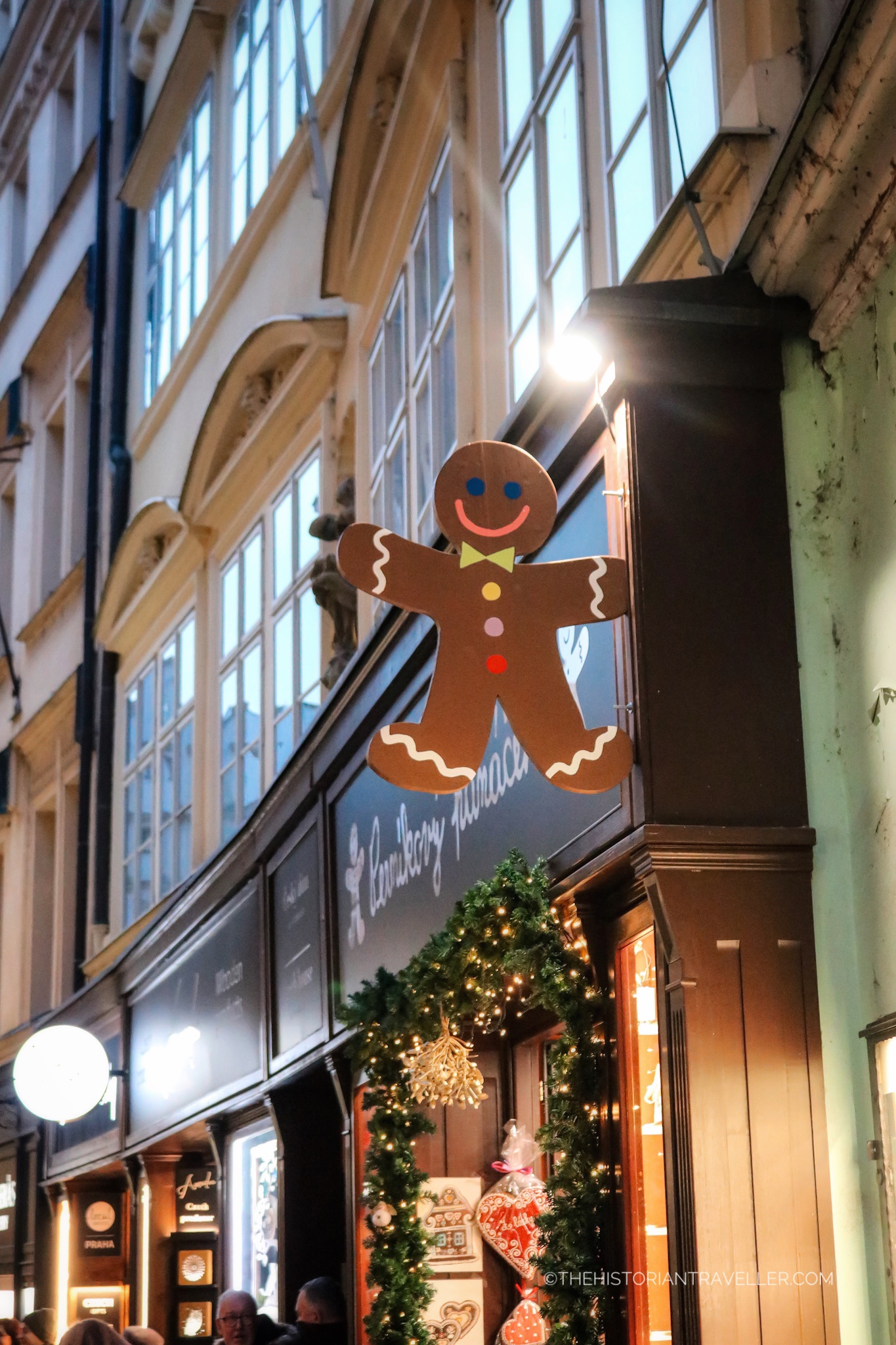
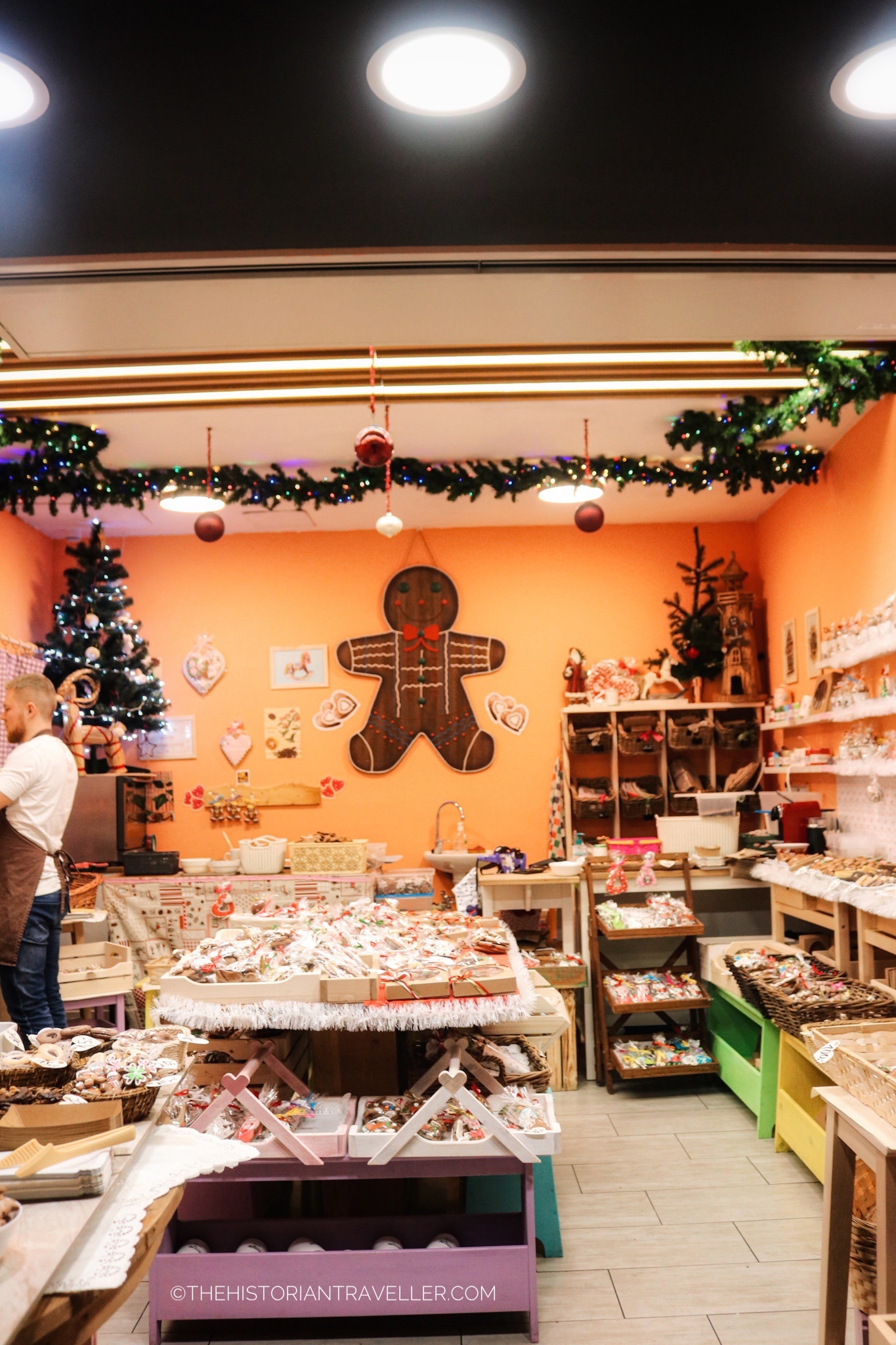
My guide in Prague told me that making gingerbread during the Christmas season is one of the traditional things Czech families do. Moreover, it is estimated that each household in Czech Republic bakes around eight types of gingerbread during the festive season. Gifting gingerbread is not only appreciated but most of the time a wish for good luck. Indeed, the different shapes used for these delicious biscuits follow a specific tradition. For example, heart-shaped gingerbread is usually given at weddings or during love-related festivities. Moreover, a stag-shaped gingerbread means long life and a chimney sweep gingerbread is a wish for good luck.
Český Krumlov a city for gingerbread lovers
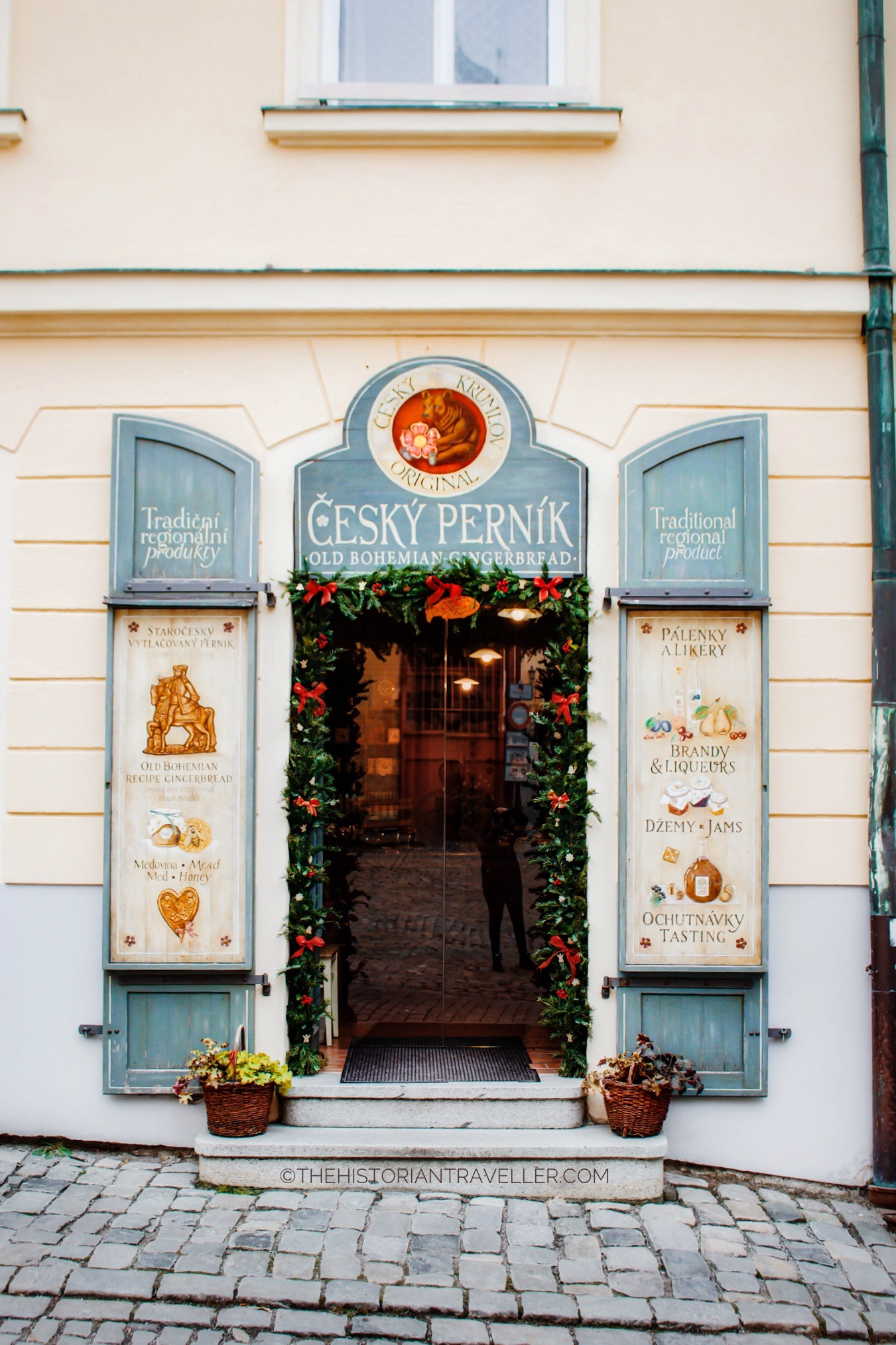
If you want to have a taste of one of the oldest perník recipes in the country, then head to Český Krumlov. Here, the shop Český Krumlov Originál still bakes its gingerbread with the original 16th-century recipe. This includes hand-pressing the gingerbread into wooden moulds that are professionally carved from fine fruit-woods. Then, the gingerbread is cooked in specific ovens according to a set time and temperature that gives every biscuits its brown famous colour.
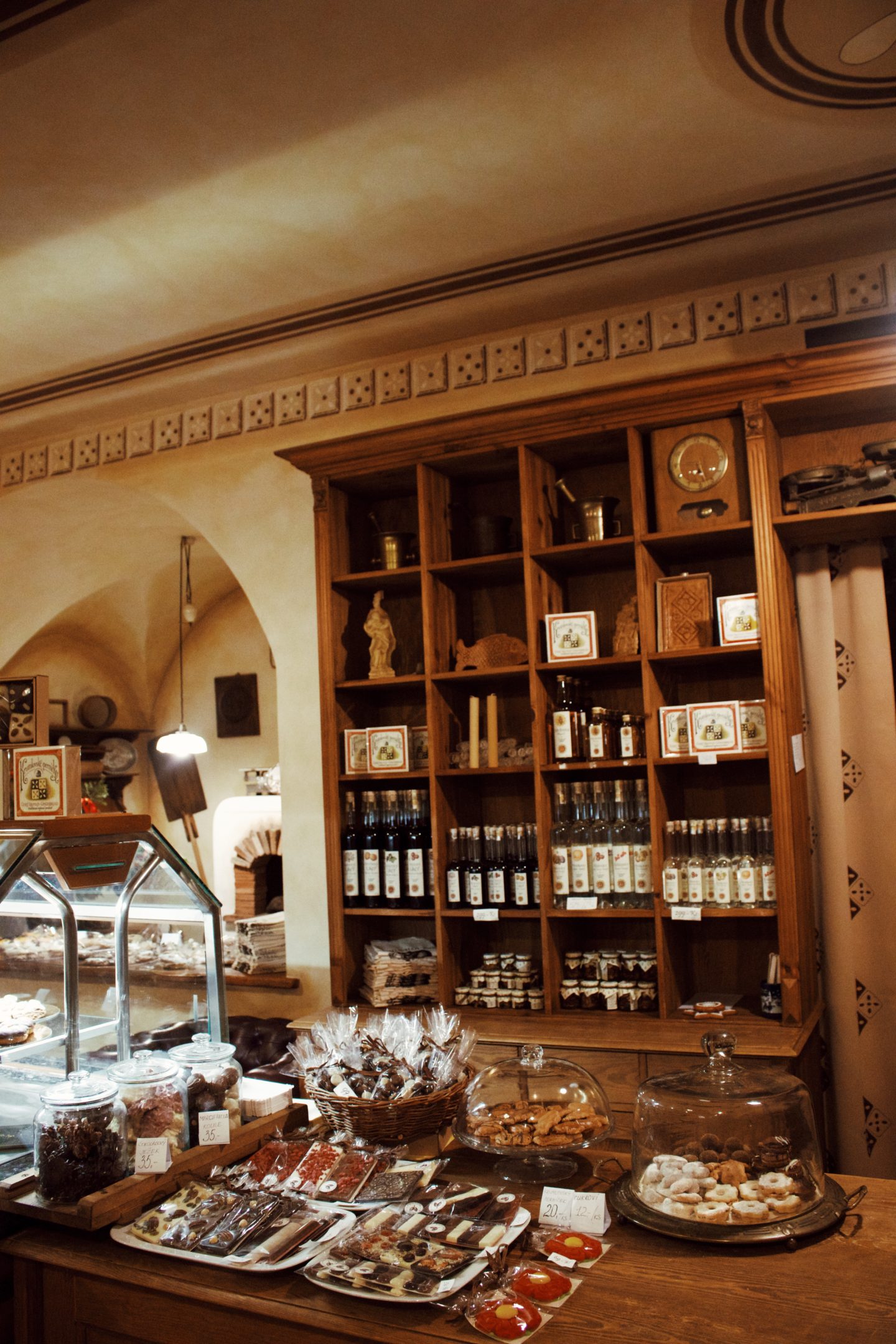
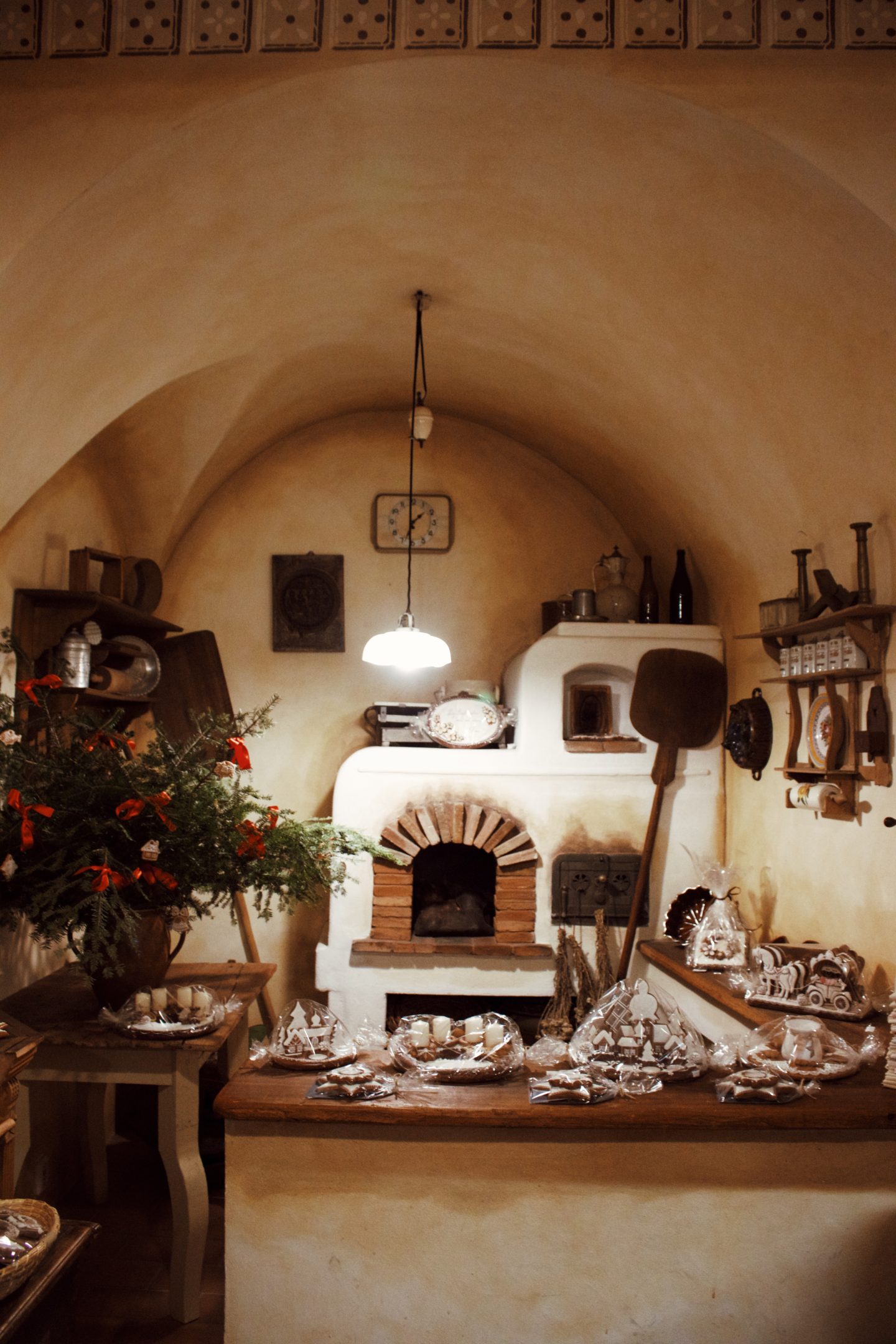
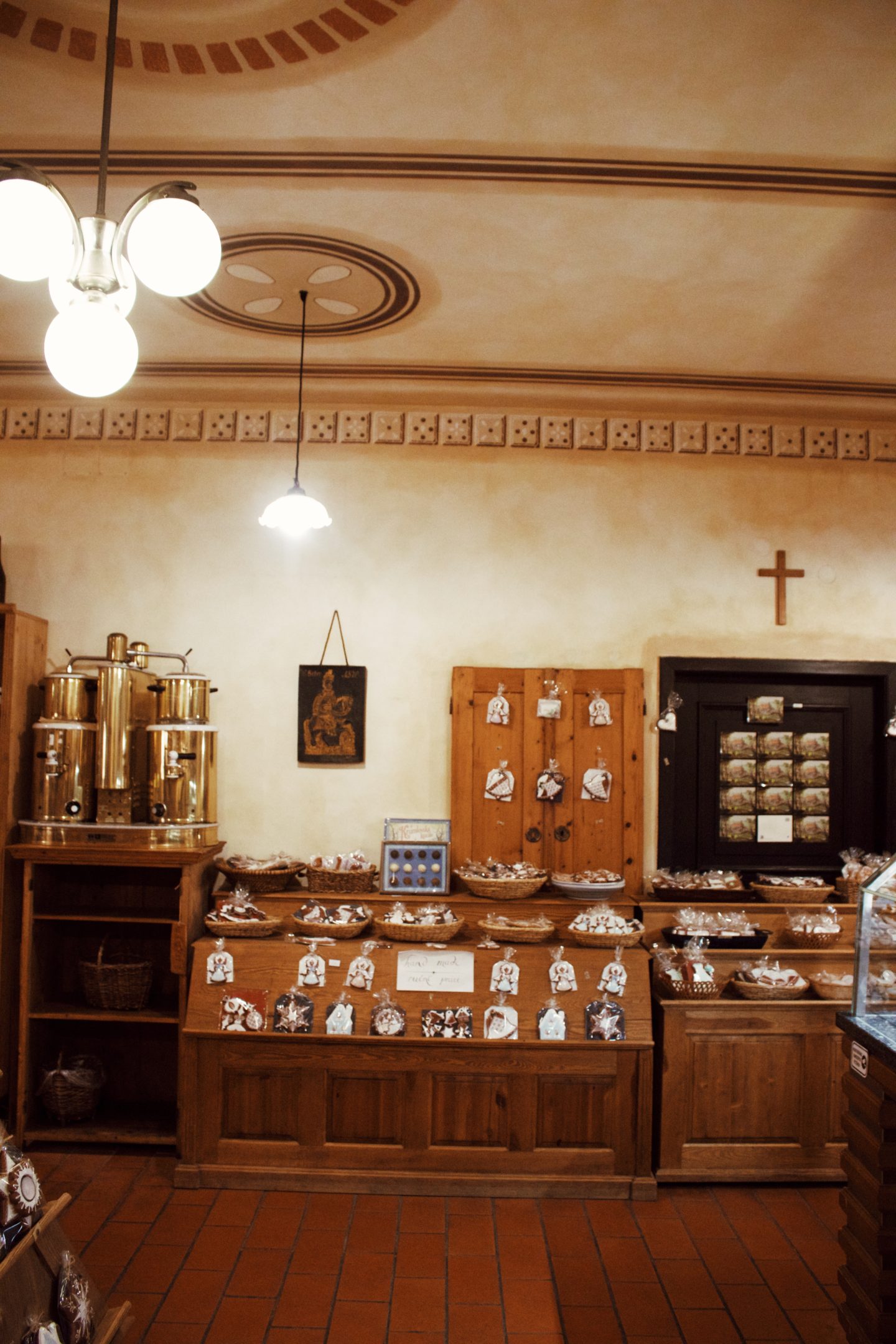
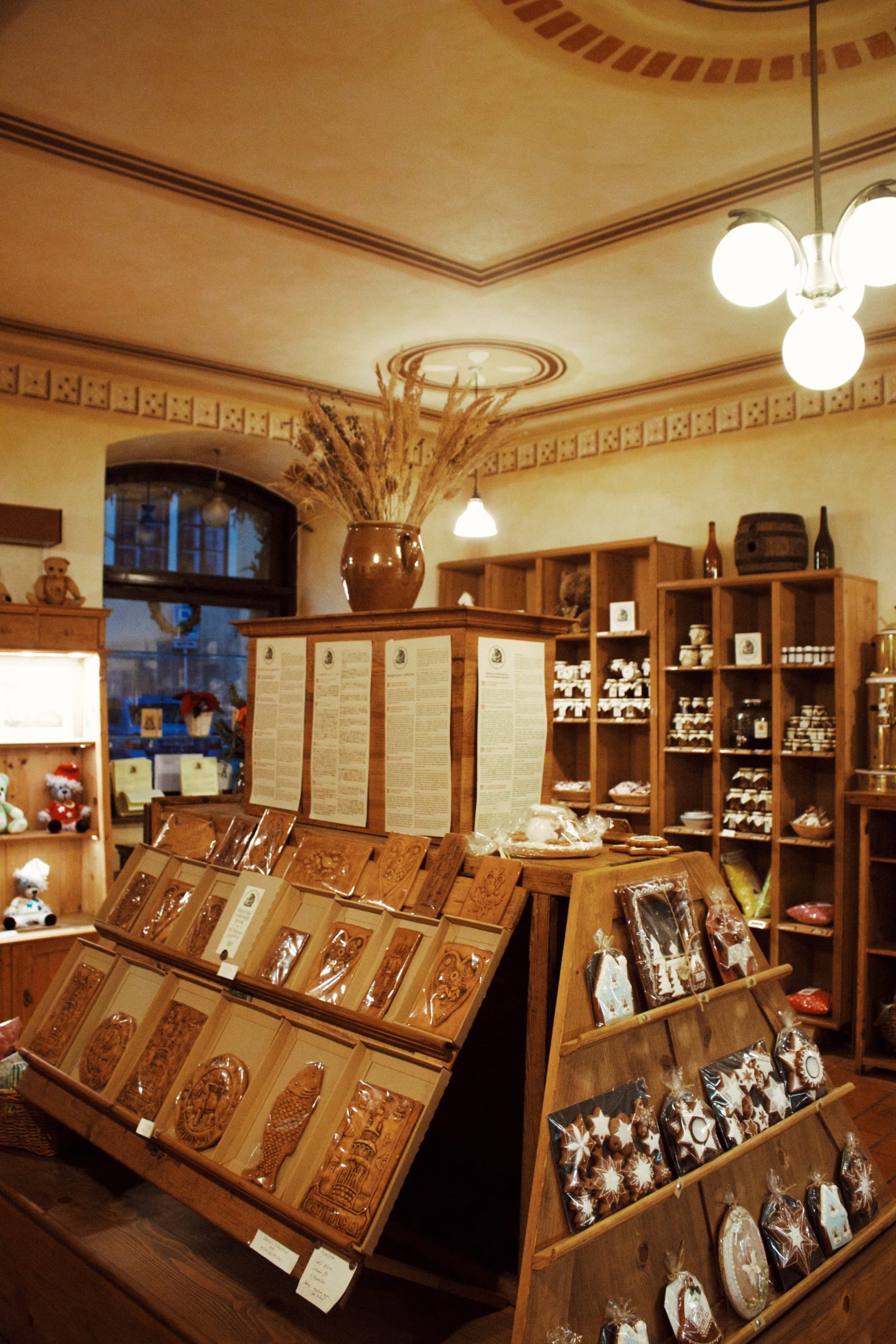
The shop is currently selling two different types of gingerbread. The first type are the original 16th-century biscuits (photo below) that are still edible and cooked with the finest ingredients but mostly used as decoration for the Christmas tree. Indeed, the lady at the shop told me that these old type of biscuits are a little harder to eat and not suitable for anyone.
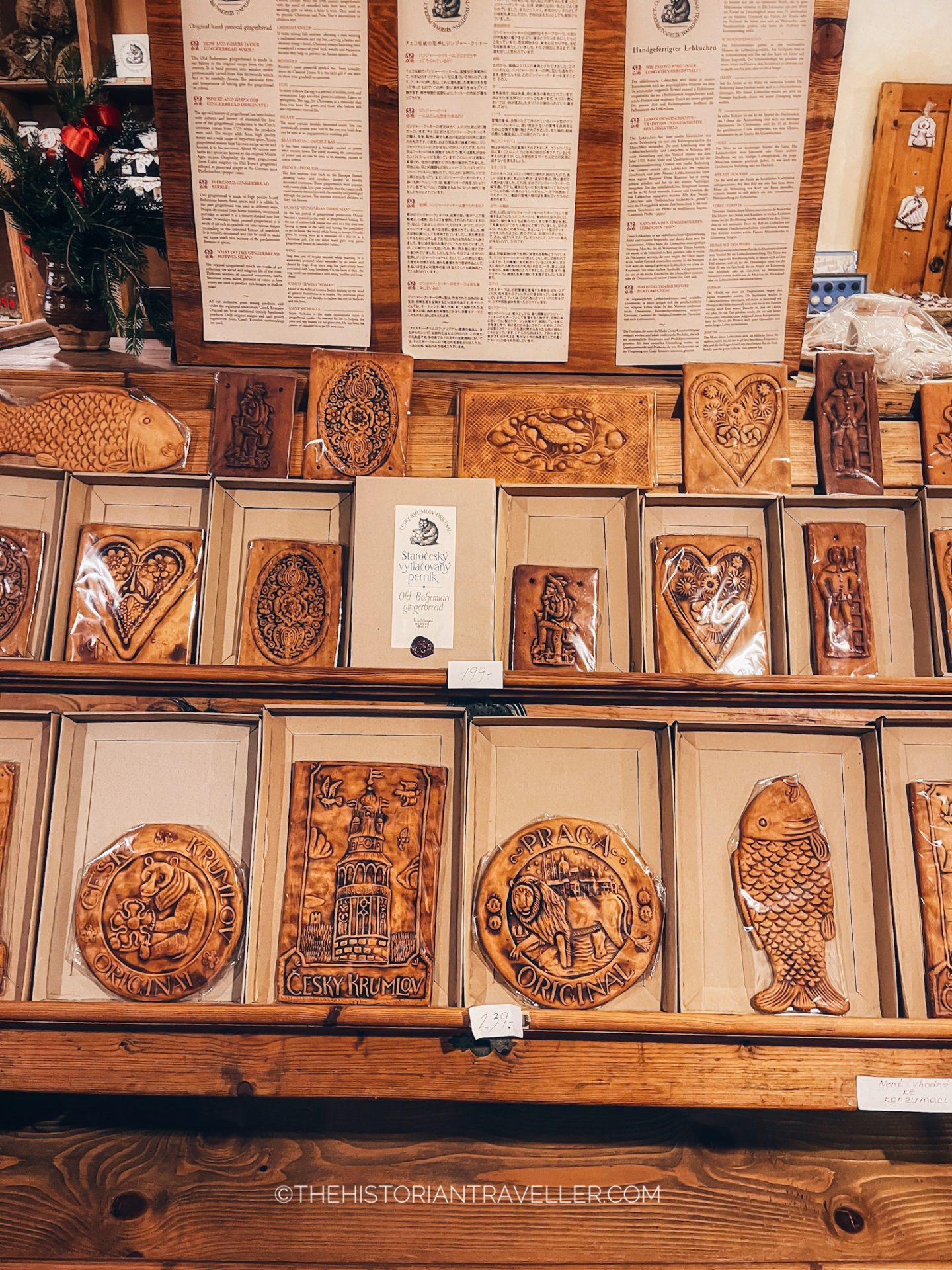
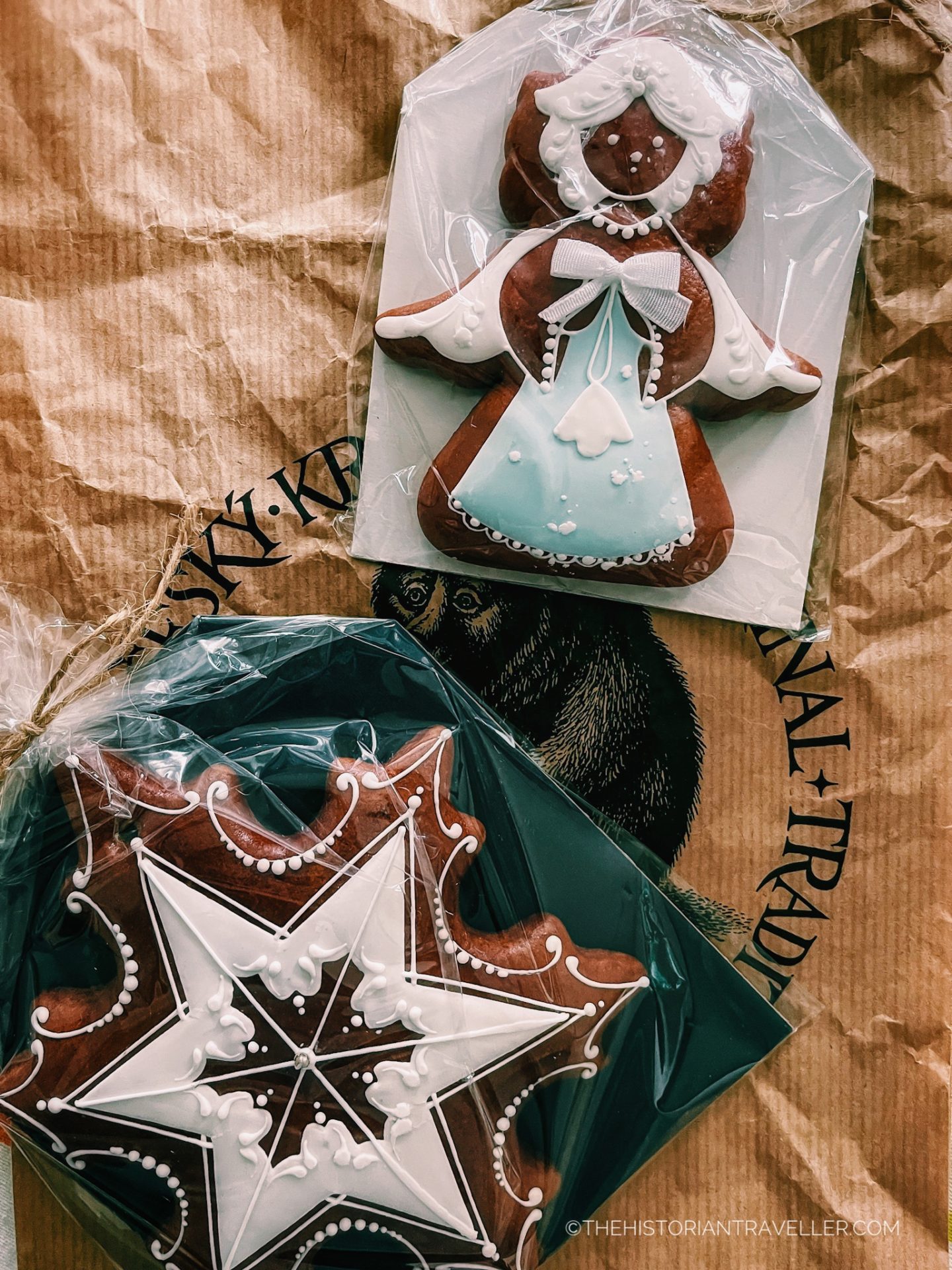
The second type are the “modern” gingerbread biscuits that come in different shapes and sizes. Of course, also these type are hand-made and cooked with finest ingredients. Moreover, their recipe it’s still a well-kept secret.
5. The carp in the bathtub for Christmas day
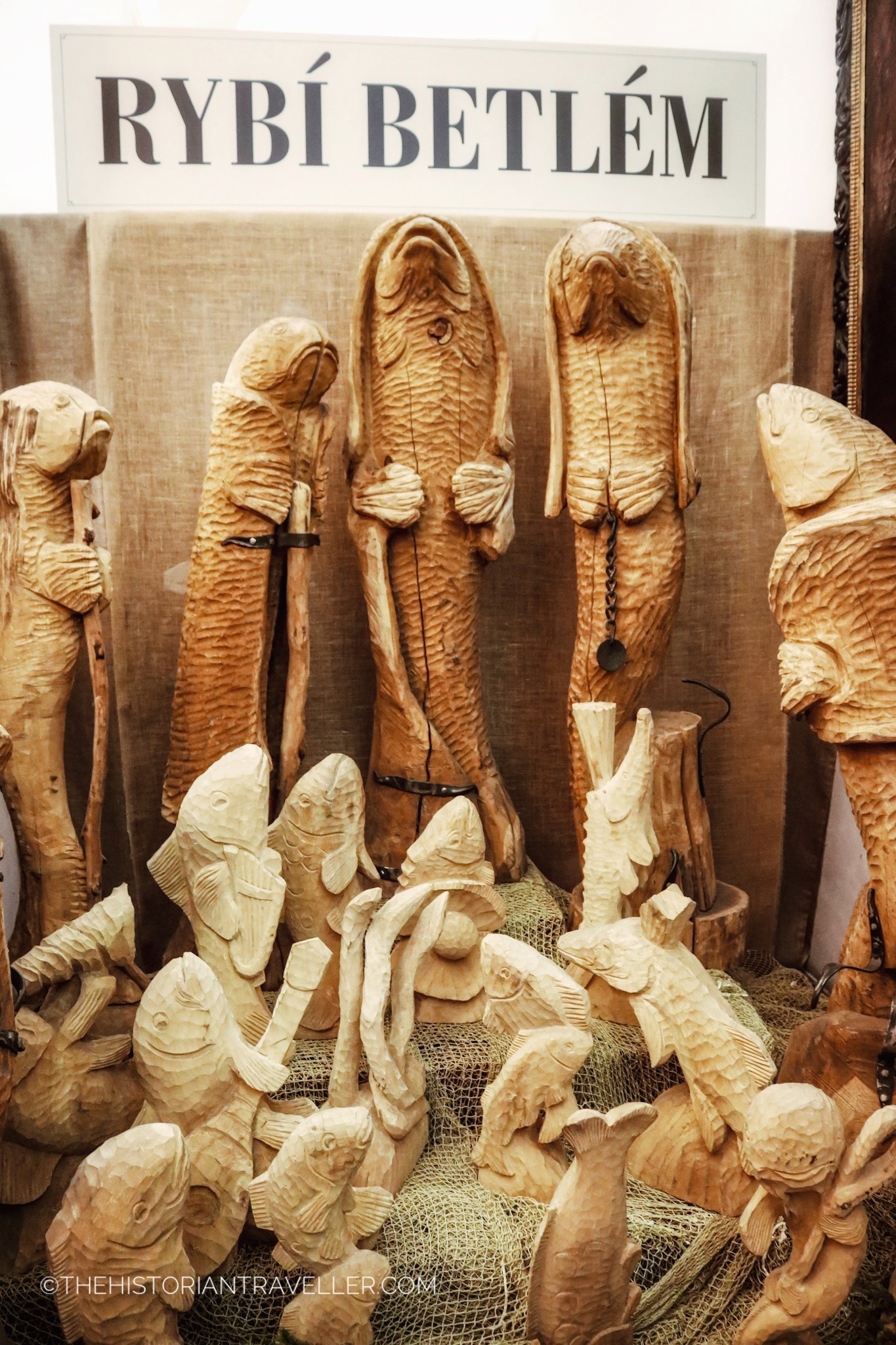
One of the (unusual) Czech winter traditions I’ve learnt during my stay is about the carp in the bathtub for Christmas day. Yes you are reading it right. Both my guides in Prague and Český Krumlov told me about their own family traditions and how each year they keep a carp in their bathtub for a day before serving it for Christmas.
But let me start from the beginning.
As many traditions kept alive by Czech people, also this one has origins in the Middle Ages. Particularly when Catholicism implied that Catholic people couldn’t eat meat during the Advent fast. During the 13th century, fish became incredibly popular as a fasting dish to serve for the Christmas Eve. In fact, Catholics didn’t consider fish as meat and being Christmas Eve the last day of the Advent fast, this was a good compromise for the Christmas dinner.
Eating fish for Christmas Eve is a tradition widely diffuse in Central and Eastern Europe. Nevertheless, the Czech use of a carp comes from a specific tradition. Indeed, it looks like the Rosenberg family, who ruled in Czechia for more than four centuries, used to cultivate carps in the lakes of the country. From these lakes carps became a popular Christmas dish.
But why keep the carp in the bathtub?
The odd part of the tradition is not actually eating a carp for Christmas Eve but keeping it as a kind of pet in people’s bathtub. In fact, in order to be served fresh, the carp needs to be alive. For this reason, Czech people buy it a few day before Christmas Eve and keep it in the bathtub. This procedure helps also removing the muddy taste coming from the lakes. Nevertheless, young children started becoming attached to this pet in their bathroom. Therefore, families found it cruel to make them know what would happen at the poor carp. So, they came out with a story about the carp disappearing for the magic of Christmas. Of course, they will discover the bad truth only when they are adult. In the meantime carps continue to be served fried and with potato salad for every Christmas Eve.
6. Baby Jesus (Ježíšek)
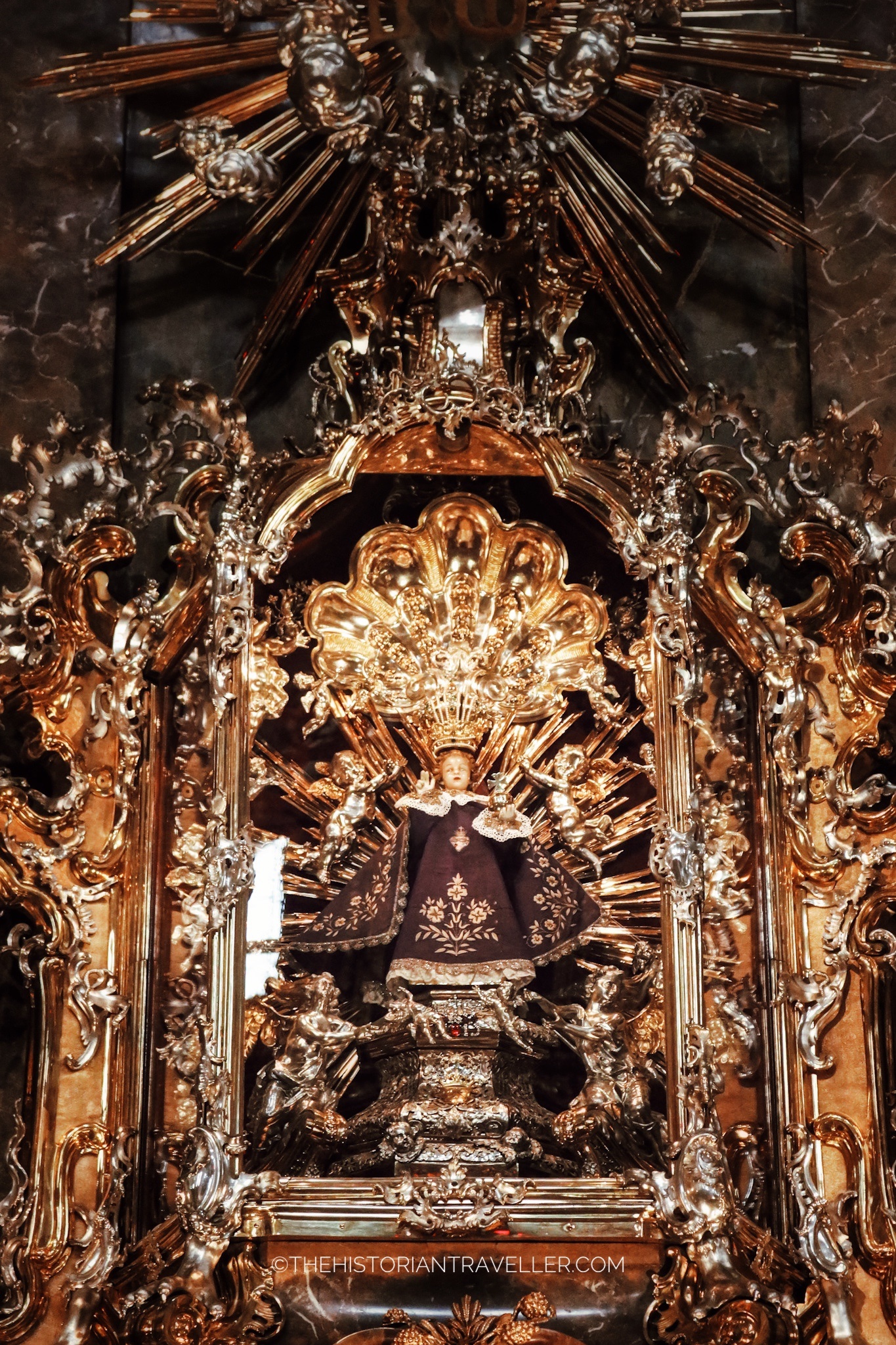
While most of the children around the world wait for Santa Klaus on Christmas Eve, Czech children wait for Ježíšek.
Ježíšek is a Christmas gift-giving figure who can be translated as “Baby Jesus”. Ježíšek tradition is almost 400-years-old and endured wars, revolutions and cultural changes. The introduction of Baby Jesus is traditionally attributed to Martin Luther, who thought it was more appropriate of St. Nicholas. Despite being one of the most secular nations in Europe, Czech Republic continue to preserve the Ježíšek tradition. In fact, an attempt to substitute Ježíšek with the Russian “Děda Mraz” (Godfather Frost) failed miserably during the Communist era.
Although having an initial Catholic association, current Baby Jesus doesn’t have a proper physical description nor a Christian significance. Some people describe him like a toddler, some other like a baby in the crib or an abstract figure. Children wait for him on Christmas Eve dinner and some of them see him flying in the sky after the first star appears. Gifts will be open as soon as Ježíšek has finished his work on Christmas Eve.
Baby Jesus vs Infant Jesus
What you should keep in mind is that if someone is talking about a Baby Jesus bringing gifts for Christmas, this is generally not related to the one preserved on the Church of our Lady Victorious in Prague (pictured above). The worldwide-famous statuette is called “Infant Jesus” and its a 16th-century old wax coated wooden statue of immense value. Catholic religious Czech people may associate the statuette with Ježíšek but in most of the cases they are not the same entity.
Conclusions
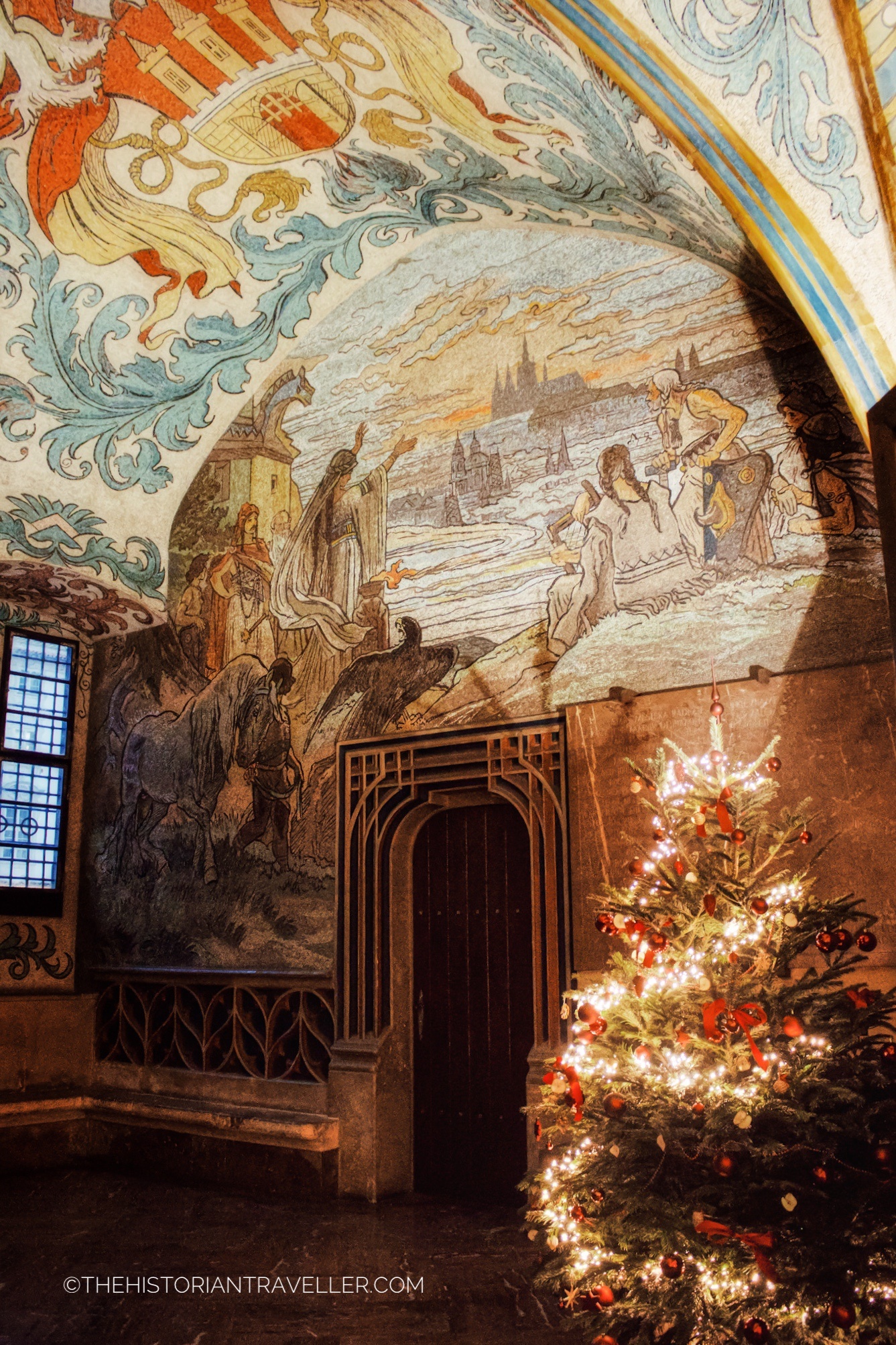
This trip has taught me that there are still many things I don’t know about the fascinating Czech culture. I love their approach to tradition and their willing to keep alive their historical roots. The list I provided above is not certainly exhaustive about the vast number of Czech winter traditions but it reflect those I was able to witness/experience while I was visiting this beautiful country.
This trip was possible thanks to Visit Czech Republic and Český Krumlov Region
Plan your trip to Czech Republic




Did you like this blog? Pin it for later!



This looks so magical! I went to Prague years ago for Christmas but I’m hoping to go next year. I love their gingerbread tradition!
Author
Prague is really beautiful in winter! And their gingerbread biscuits are so good!
We visited the Czech Republic in the spring but always wanted to plan a return visit in the winter. Cosy treats and snow covered streets would draw me along. We had a local guide for our whole time in the Czech Republic and heard lots of local tales. But we missed these ones related to the Christmas season. We sure missed the gingerbread when we visited Cesky Krumlov.
Author
Cesky Krumlov looks really out of a fairytale! I was really surprised at how many traditions this country still keep alive! It’s fantastic!
I love learning traditions of other countries, so I enjoyed this. That is SO cool that Prague still uses a lamp lighter!
Author
Thanks a lot! I didn’t know about the Prague lamplighter, I discovered there while walking on the bridge! It was a fantastic surprise!
The Czech Republic looks beeeautiful in the wintertime! I had never heard of keeping a carp in a bathtub for Christmas! This makes me want to visit a Czech family at Christmas time to see if they still do. I LOVE the carvings to show this. 🙂
I really fancy some gingerbread now…
Author
Yes! It’s such a weird but at the same time incredible tradition. It would be great to spend Christmas with a Czech family to experience this once!
I’ve been to the Czech Republic once, so I wasn’t aware of the traditions other than the gingerbread one. This was so fun to read, thanks for sharing!
Author
Thanks for reading it Krista! Czech Republic is probably one of the most amazing places to see all these traditions coming alive!